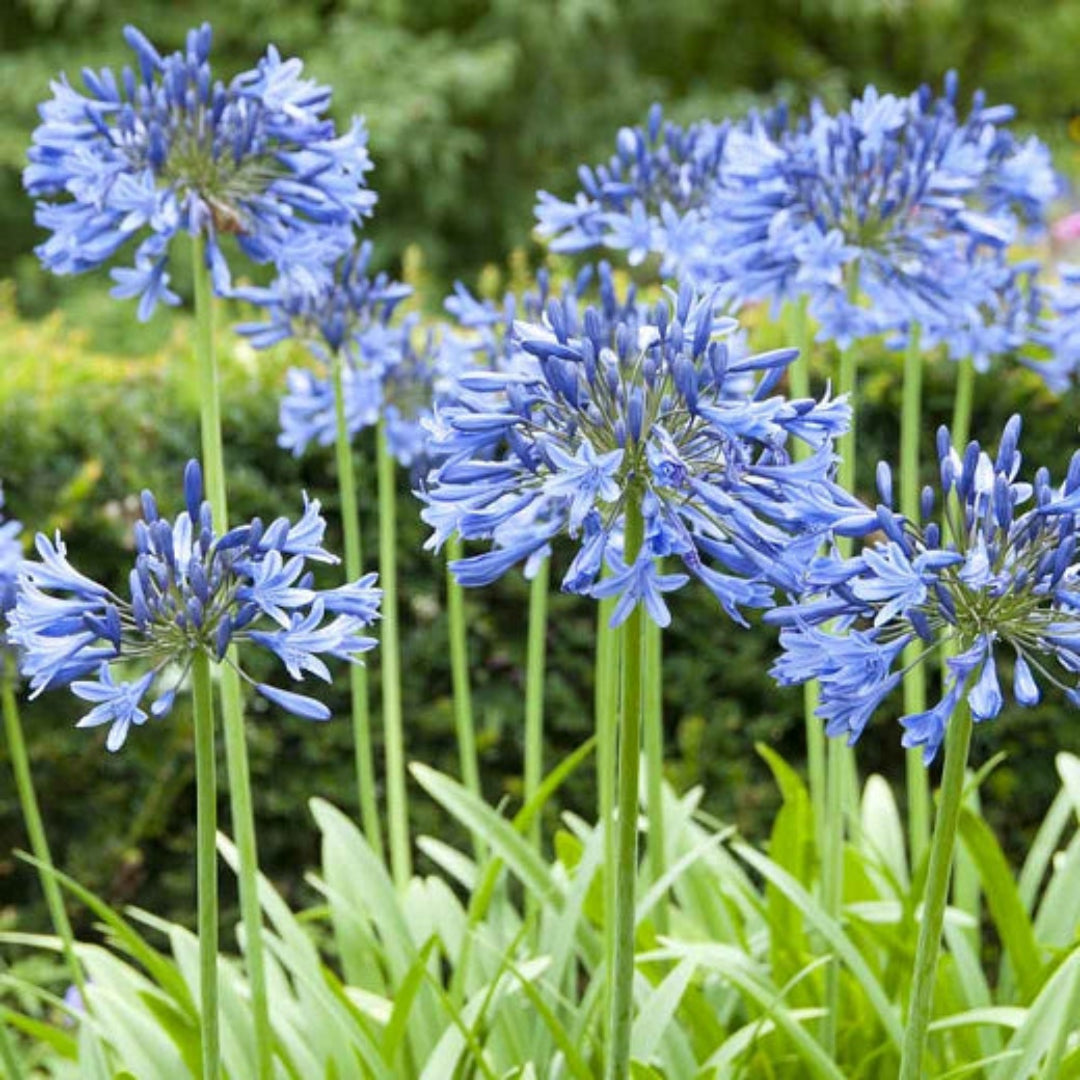Grasping the Art of Agapanthus Treatment: Vital Actions for Healthy Development and Dynamic Blooms
In the world of cultivation, the farming of agapanthus stands as a fulfilling undertaking for those that seek to support these stylish flowering plants. From selecting the right selection to grasping pruning strategies, the trip in the direction of cultivating prospering agapanthus plants is multifaceted and holds the essential to unlocking the complete capacity of these agricultural gems.

Picking the Right Agapanthus Range

When picking the right Agapanthus selection for your yard, take into consideration factors such as climate suitability, flower shade, and development habit. Agapanthus, commonly known as Lily of the Nile or African lily, can be found in a selection of colors varying from tones of blue and purple to white. Pick a blossom color that complements your existing garden palette to create a harmonious landscape. Furthermore, take into consideration the climate in your area to make certain the Agapanthus selection you choose can thrive in your specific problems. Some ranges are a lot more tolerant of chilly temperatures, while others choose warmer climates. Comprehending the development practice of different Agapanthus selections is vital for correct positioning within your yard. Some ranges have a clumping growth routine, suitable for borders or containers, while others have a more dispersing nature, ideal for ground cover or mass growings. By very carefully assessing these aspects, you can pick the perfect Agapanthus selection to enhance the charm of your yard.
Suitable Planting Conditions
Taking into consideration the optimal environmental needs is essential for successful Agapanthus cultivation. Agapanthus prospers in well-draining dirt with a somewhat acidic to neutral pH degree. When planting, select an area that gets complete sunlight to partial color. In hotter climates, supplying some afternoon shade can prevent scorching of the leaves. Agapanthus plants are sensitive to chilly temperatures and should be secured from frost throughout winter season.
To ensure healthy and balanced growth and lively blooms, plant Agapanthus bulbs at a depth of concerning 2-4 inches and area them 8-12 inches apart. Mulching around the base of the plants helps preserve moisture and suppresses weed development.
Watering and Feeding Tips
Maintaining correct moisture degrees and providing important nutrients are key elements in the treatment routine for Agapanthus plants. When it comes to watering Agapanthus, it is vital to strike a balance. our website These plants favor regularly damp dirt but are at risk to root rot if overwatered.
Feeding Agapanthus is vital for promoting healthy development and prolific blooms. Apply a well balanced plant food, such as a 10-10-10 formula, in the early springtime as brand-new growth arises. By adhering to these watering and fertilizing tips, you can guarantee your Agapanthus plants prosper and produce lively, durable blooms.
Pruning Strategies for Agapanthus
Trimming Agapanthus plants at the suitable times and with correct strategies is important for preserving their wellness and advertising ideal growth and blooming. The optimal time to prune Agapanthus is in late winter season or very early springtime before new development arises. Start by eliminating any type of yellowing or dead leaves near the base of the plant. Cut them as close to the ground as possible without damaging the arising shoots.
Deadheading invested flowers can likewise reroute the plant's energy right into producing even more blossoms rather than establishing seeds. If you want to gather seeds for propagation, leave some blossoms to fully grown and dry on the plant.
Bear in mind to make use of clean, sharp tools to make exact cuts and decrease the danger of presenting diseases. Agapanthus. Routine pruning will assist maintain your Agapanthus looking healthy and balanced and neat while making certain an abundant display of gorgeous blossoms
Dealing With Typical Parasites and Diseases
After making sure appropriate trimming methods for Agapanthus, it is vital explanation to attend to common pests and diseases that can affect the wellness and vigor of these plants. One usual pest that impacts Agapanthus is the Agapanthus gall midge.
Another usual concern is fungal fallen leave spot, which presents as dark sores on the fallen leaves. To stop fungal diseases, guarantee good air blood circulation around the plants, stay clear of above watering, and remove any contaminated leaves promptly. In addition, Agapanthus plants can deal with origin rot if they are planted in poorly draining soil. To stop this, plant Agapanthus in well-draining dirt and stay clear of overwatering. By being watchful and taking punctual action against pests and diseases, you can aid your Agapanthus plants grow and generate lively flowers.

Conclusion
Finally, grasping the art of agapanthus care involves selecting the ideal selection, offering excellent planting conditions, proper watering and feeding, ideal pruning techniques, and addressing typical insects and conditions. By complying with these vital steps, you can ensure healthy development and lively flowers her comment is here for your agapanthus plants. Remember to frequently keep an eye on and maintain your plants to promote their overall health and durability.
To make sure healthy growth and dynamic blossoms, plant Agapanthus bulbs at a depth of about 2-4 inches and room them 8-12 inches apart. By following these watering and feeding tips, you can guarantee your Agapanthus plants flourish and produce vivid, durable blossoms.
One common insect that impacts Agapanthus is the Agapanthus gall midge. Additionally, Agapanthus plants can endure from origin rot if they are planted in inadequately draining dirt. By complying with these crucial actions, you can make sure healthy and balanced growth and vivid blooms for your agapanthus plants.
Comments on “Agapanthus Care Tips for Lush and Vibrant Flowers”